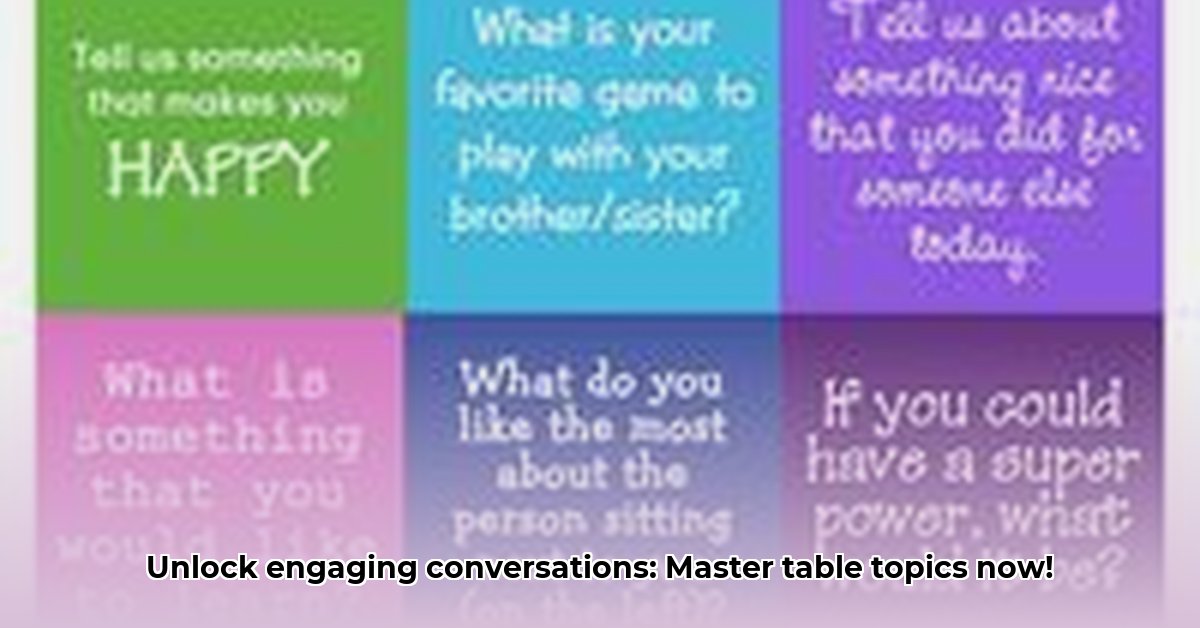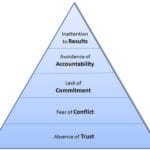Tired of awkward silences hijacking your meetings or social gatherings? Yearning to spark dynamic conversations that genuinely resonate with people? This comprehensive guide unveils the art of crafting compelling table topics questions—those quick, thought-provoking prompts that transform any gathering into a hub of vibrant discussion. Whether you’re leading a team, orchestrating an event, or simply striving to become a more captivating conversationalist, this guide equips you with the tools to elevate your communication skills and forge deeper connections.
Designing Table Topics Questions That Captivate
The key to impactful table topics lies in strategic design. Ditch the simple “yes” or “no” questions and embrace open-ended prompts that invite storytelling, diverse perspectives, and genuine engagement. Consider your audience—their interests, backgrounds, and shared experiences—to tailor questions that resonate and keep everyone actively involved.
Imagine a room buzzing with lively conversation, where everyone feels comfortable sharing their thoughts and ideas. This is the power of well-crafted table topics questions. By understanding your audience and their unique perspectives, you can create an environment where meaningful connections flourish.
Here’s a blueprint for crafting captivating questions:
- Hook Your Audience: Begin with a compelling hook—a surprising statistic, a thought-provoking quote, a captivating image, or a humorous anecdote—to instantly grab their attention and pique their curiosity.
- Clarity and Conciseness: Keep your questions brief, clear, and to the point. A simple, well-worded prompt is far more effective than a convoluted, ambiguous one.
- Embrace Diverse Perspectives: Frame questions that encourage a wide range of answers and viewpoints, steering clear of simple right-or-wrong responses. Foster an inclusive environment where everyone feels comfortable contributing their unique perspective.
- Define Your Objective: Clarify the purpose of your questions. Are you aiming for team building, brainstorming, problem-solving, or simply fostering deeper connections? A clear objective will shape the types of questions you ask and guide the overall discussion.
Tailoring questions to your audience ensures relevance and sparks enthusiastic participation. Consider weaving in elements of shared experiences or common interests to further enhance engagement. For example, if you’re addressing a group of teachers, you might ask, “What’s the most rewarding aspect of working with students?” This targeted approach fosters a sense of camaraderie and encourages meaningful dialogue.
Unveiling the Power of Different Question Types
Exploring diverse question categories allows you to adapt your approach to various situations and achieve specific conversational goals:
- Personal Experiences: Questions like, “Tell us about a time you stepped outside your comfort zone and what you learned from the experience,” encourage self-reflection and create a sense of shared vulnerability. These stories build trust and rapport within a group. Personal narratives are powerful tools for connection.
- Hypothetical Scenarios: “If you could travel anywhere in the world, regardless of cost or time, where would you go and why?” This type of question ignites imagination, reveals individual values, and often leads to entertaining and unexpected answers. Hypothetical questions can also be used to explore complex issues in a safe and engaging way.
- Opinion-Based Discussions: “What’s the most pressing issue facing our community today, and what potential solutions can you envision?” These questions stimulate critical thinking, encourage respectful debate, and can lead to valuable insights and collaborative problem-solving. Establish ground rules for respectful dialogue to ensure a productive and inclusive exchange of ideas.
- Fun & Lighthearted Icebreakers: “What’s the most embarrassing song you secretly belt out when no one’s listening?” Injecting humor and lightheartedness into your questions creates a more relaxed and comfortable atmosphere, especially for new groups or individuals who may be hesitant to participate. These types of questions help break down social barriers and build rapport.
Mastering the Art of Table Topics Facilitation
Here’s a step-by-step guide to harnessing the full potential of table topics questions:
- Preparation is Paramount: Curate a diverse collection of questions, categorized by topic, audience, and objective. Thorough preparation ensures a smooth, engaging, and purposeful discussion.
- Strategic Question Selection: Choose questions that align with the specific context, your desired outcome, and the overall tone of the gathering. Consider the time allotted and select an appropriate number of questions.
- Setting the Stage: Clearly explain the purpose of the activity and encourage active participation. Emphasize that there are no right or wrong answers and that the goal is to share perspectives and engage in meaningful conversation.
- Facilitation, Not Domination: Guide the conversation gently, ensuring everyone has an opportunity to contribute without interruption. Actively listen to responses, offer encouraging feedback, and gently redirect the conversation if it veers off course.
- Reflection and Synthesis: After the activity, recap key insights, common themes, and valuable takeaways. Encourage participants to reflect on the shared experience and identify any personal or collective learnings.
This structured approach transforms simple questions into powerful catalysts for connection, learning, and collaborative exploration.
Elevating Your Table Topics: Advanced Strategies
Take your table topics to the next level with these expert techniques:
- Integrating Visuals: Incorporate images, short video clips, quotes, or even physical objects to spark creativity, stimulate deeper thinking, and elicit more evocative responses.
- Connecting to Current Events: Weaving in relevant current events or pop culture trends adds a layer of immediacy and shared context to your questions. This can lead to more dynamic and engaging discussions.
- The Power of Storytelling: Encourage participants to share their answers in the form of short stories, adding details, context, and personal reflections to enhance their narratives and captivate their audience.
- Incorporating Movement and Interaction: Introduce physical activities, small group discussions, or interactive elements to break up the format and keep participants energized and engaged.
By implementing these advanced strategies, you transform simple icebreakers into memorable, impactful, and transformative conversational experiences.
- Red Cloud, NE: Discover Willa Cather’s Legacy - April 11, 2025
- Remember Old Social Media Sites? Their Rise and Fall - April 11, 2025
- How many days till Feb 3?Accurate Countdowns & Tools - April 11, 2025
















